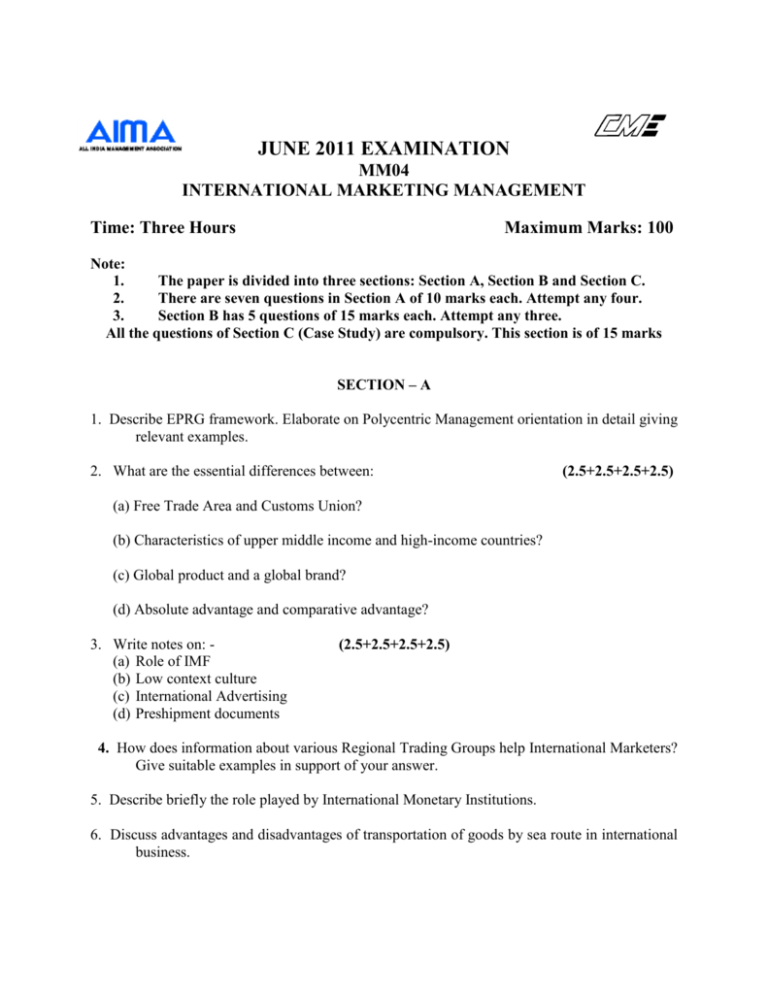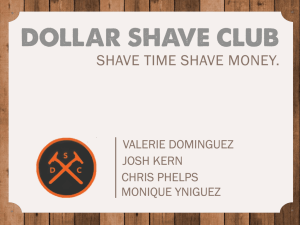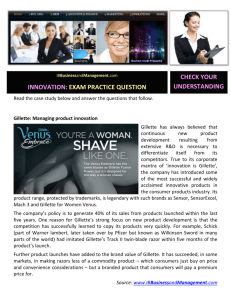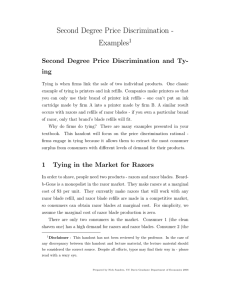international marketing management
advertisement

JUNE 2011 EXAMINATION MM04 INTERNATIONAL MARKETING MANAGEMENT Time: Three Hours Maximum Marks: 100 Note: 1. The paper is divided into three sections: Section A, Section B and Section C. 2. There are seven questions in Section A of 10 marks each. Attempt any four. 3. Section B has 5 questions of 15 marks each. Attempt any three. All the questions of Section C (Case Study) are compulsory. This section is of 15 marks SECTION – A 1. Describe EPRG framework. Elaborate on Polycentric Management orientation in detail giving relevant examples. 2. What are the essential differences between: (2.5+2.5+2.5+2.5) (a) Free Trade Area and Customs Union? (b) Characteristics of upper middle income and high-income countries? (c) Global product and a global brand? (d) Absolute advantage and comparative advantage? 3. Write notes on: (a) Role of IMF (b) Low context culture (c) International Advertising (d) Preshipment documents (2.5+2.5+2.5+2.5) 4. How does information about various Regional Trading Groups help International Marketers? Give suitable examples in support of your answer. 5. Describe briefly the role played by International Monetary Institutions. 6. Discuss advantages and disadvantages of transportation of goods by sea route in international business. 7. Discuss the importance of secondary data in International Market Research. Give some examples of analysis using secondary data. SECTION – B 8. Explain Self reference Criterion (SRC). Give example of a product failure which could have been avoided by application of SRC concept. 9. Describe in detail various Asian Trade Groups. 10 Write in detail the importance of understanding of cultures of different countries for International Marketing Managers. 11 What factors would you consider while appointing a distributor in an overseas country? 12. Discuss the risks related to transportation of goods faced by an International marketer and how they mitigate these risks. Section-C (Compulsory) 13. CASE STUDY Gillette’s Market Research in Sri Lanka Gillette has been a pioneer in the shaving products category since 1900 and has since been the world leader in this category. Gillete started its operations in India in 1988. It sells many types of razors, razor blades, shaving cream, deodorants, toiletries and oral care products. The market structure for many of the Gillette’s products has mainly been virtually monopolistic even with many producers in the market. Technology and product differentiation play a key role in the marketing of razors. Besides, Gillette products are interdependent in demand, production, and consumption. For instance, razor blades and shaving creams are complementary with razors. The demand for razors is price-elastic and any reduction in the price of razors tends to increase its demand, which has a direct bearing on the total revenue of complementary products, such as razor blades, shaving creams and shaving lotions. Gillette’s strategy has been to keep the razors’ prices low and the prices of razor blades and shaving cream relatively higher. Razors contribute very low revenue to the company’s turnover, whereas razor blades contribute almost 90% of the company’s turnover. Gillette’s marketing strategy entails price reduction on one particular brand of razors. This, as a result, increases its demand while cannibalizing the demand of other razors in the similar category. The company keeps a constant vigil on the market and monitors the effect of pricing decisions on substitutes and its cannibalization impact on its other products. Gillette India has a market share of 60% in blades and razors in India. The composition of Sri Lanka’s shaving market (Table 1) suggests that disposable razors accounted for 67% of the market share followed by double-edged blades (32%) and twin blades (1%) in 1990. As MM04/June11/Page 2 of 3 indicated in Table 2 below, Gillette’s market share was a meager 7% while BIC dominated the market with 91%. Table 1 Composition of Sri Lanka’s Shaving Market (1999) Double Edge blades Twin Blades Disposable razors 32% 1% 67% Table 2 Composition of Disposable Razors in Sri Lanka (1999) Super Max Gillette BIC Others 1% 7% 91% 1% Analysis of macro-economic data indicates that Sri Lanka has a population of 19 million that is growing at 1.3% annually, with a per capita GDP of US$ 850. The literacy rate in Sri Lanka is quite high at 92% in the South Asian region. The male population in Sri Lanka is about 52%, of which about 60% males are above 15 years of age. This gives a broad indication of good market potential in Sri Lanka. Gillette’s meagre share of 7% in value terms is a matter of serious concern for the firm and the top management is naturally worried. QUESTIONS: 1. List the sources one could tap for compiling secondary-level database of information. 2. Identify the cultural traits of Sri Lankan consumers that influence the field surveys and marketing decisions. 3. List out indicators, which suggest good market potential for Gillette. (5+5+5) ************** MM04/June11/Page 3 of 3







